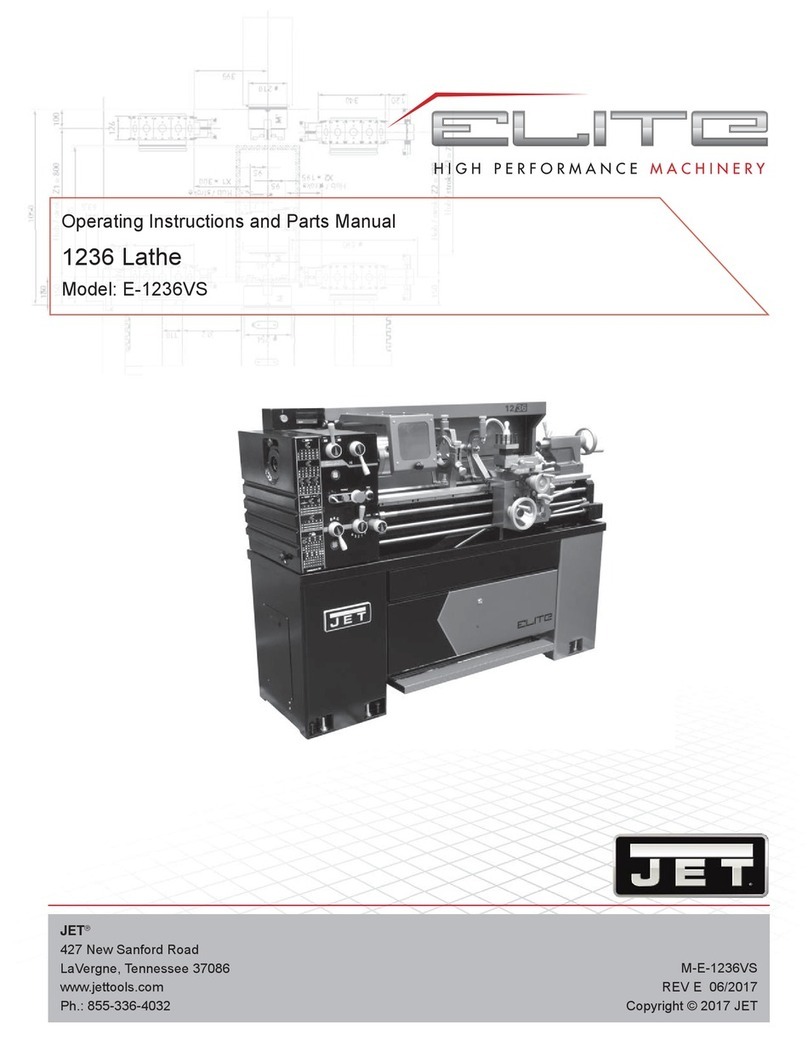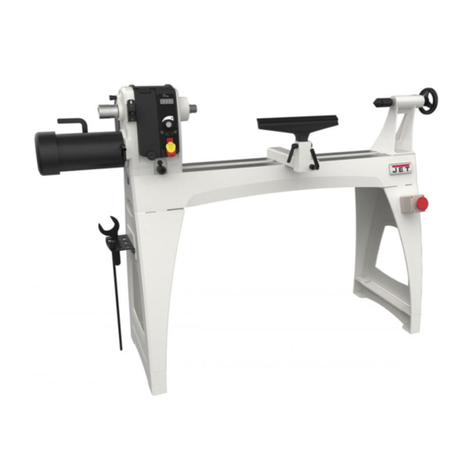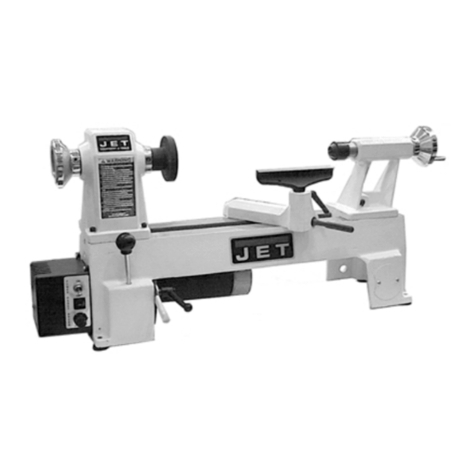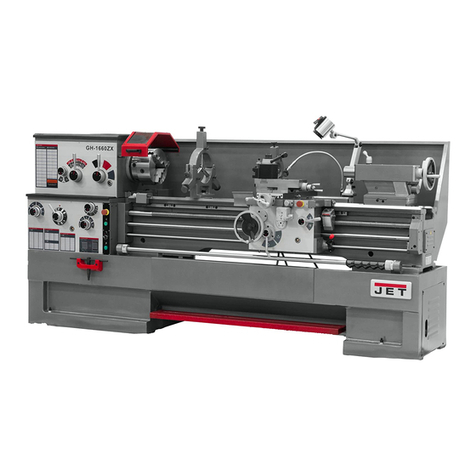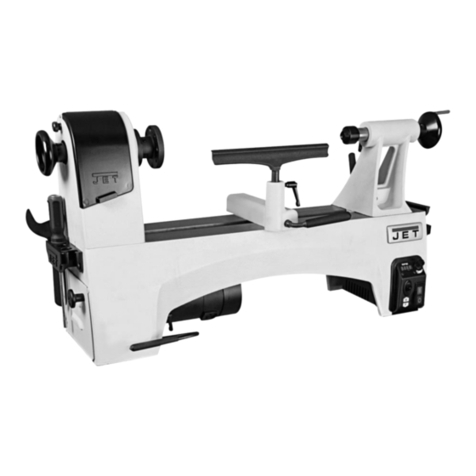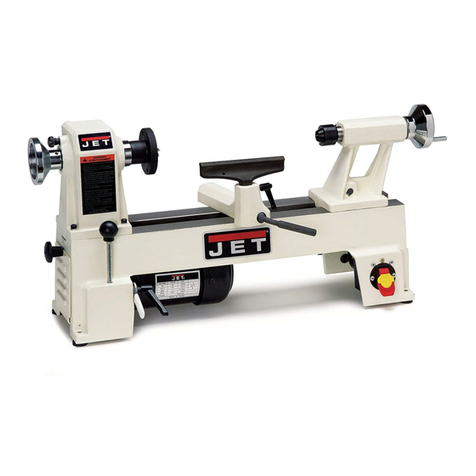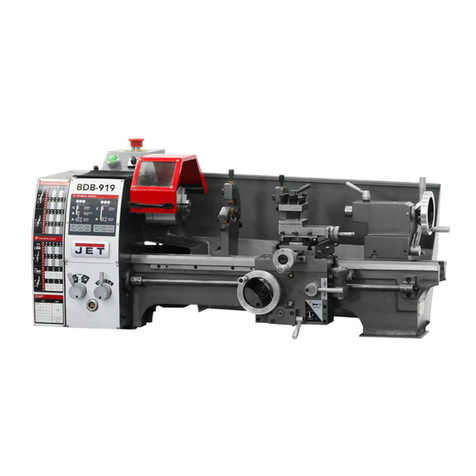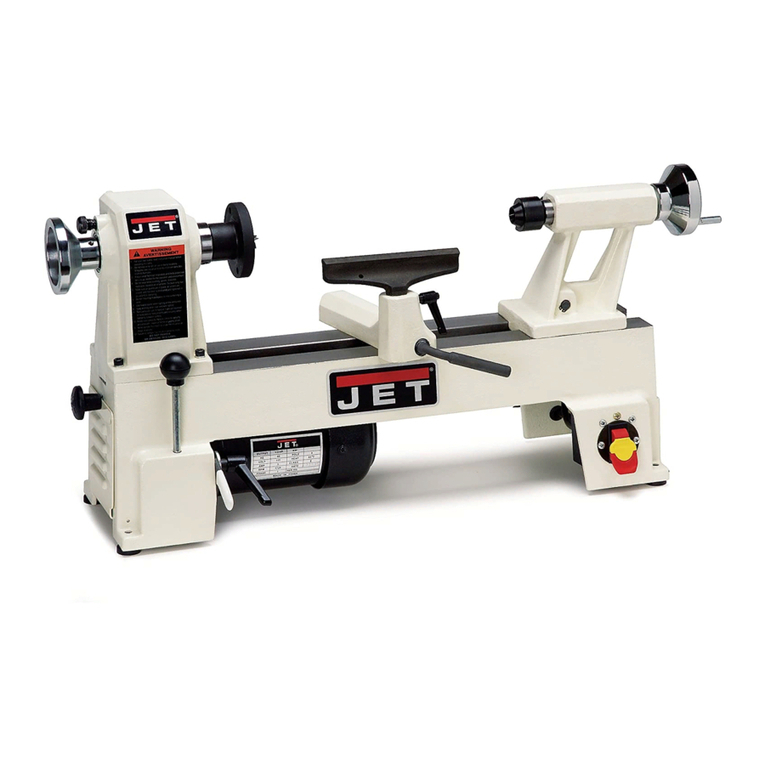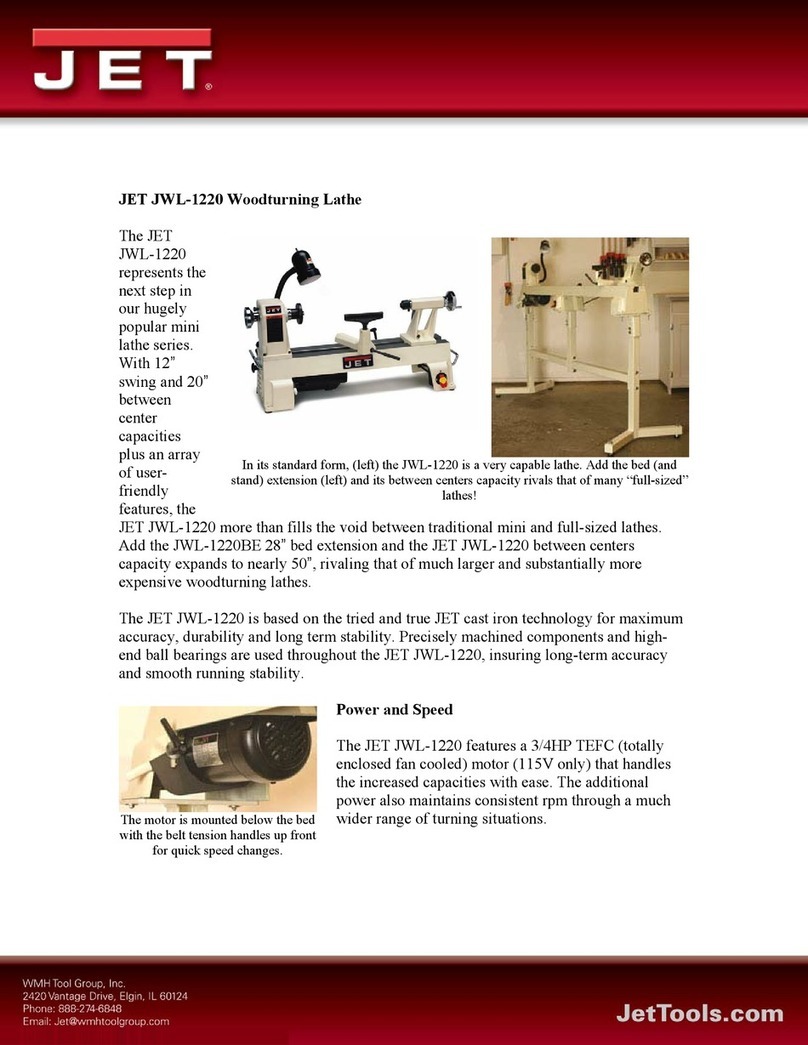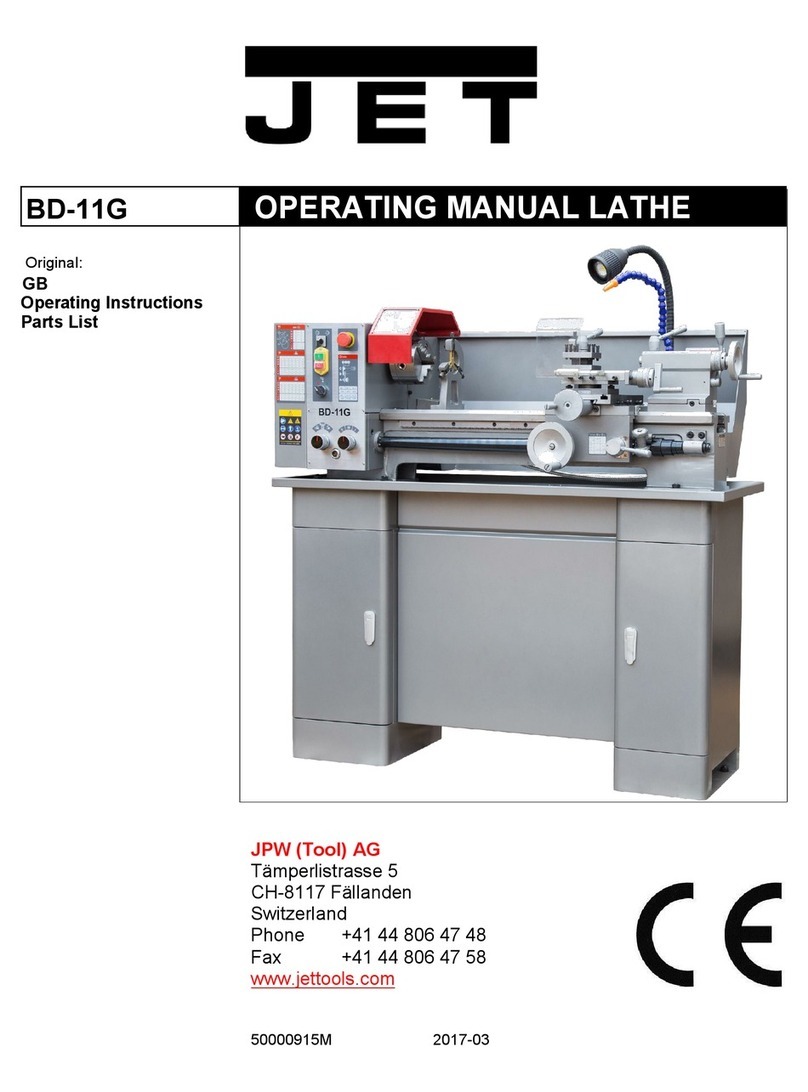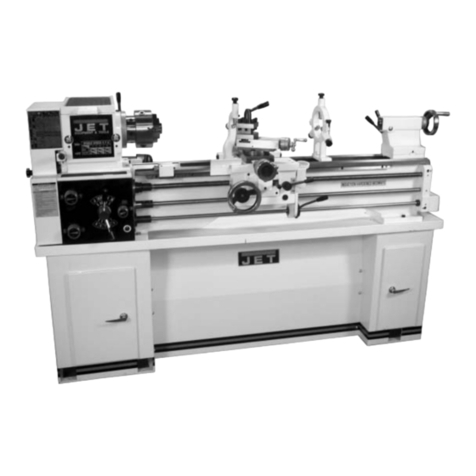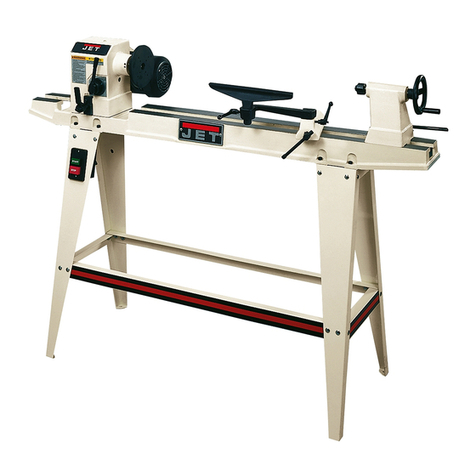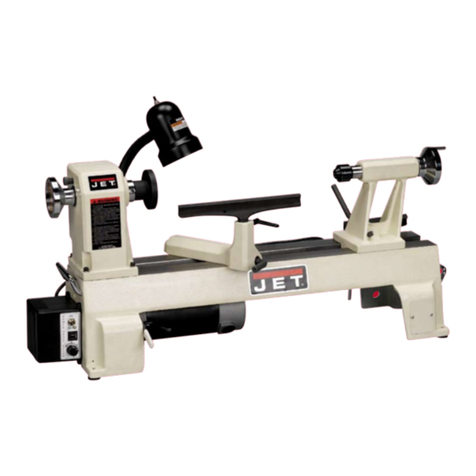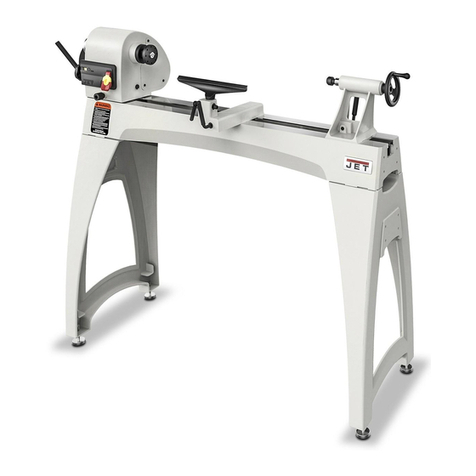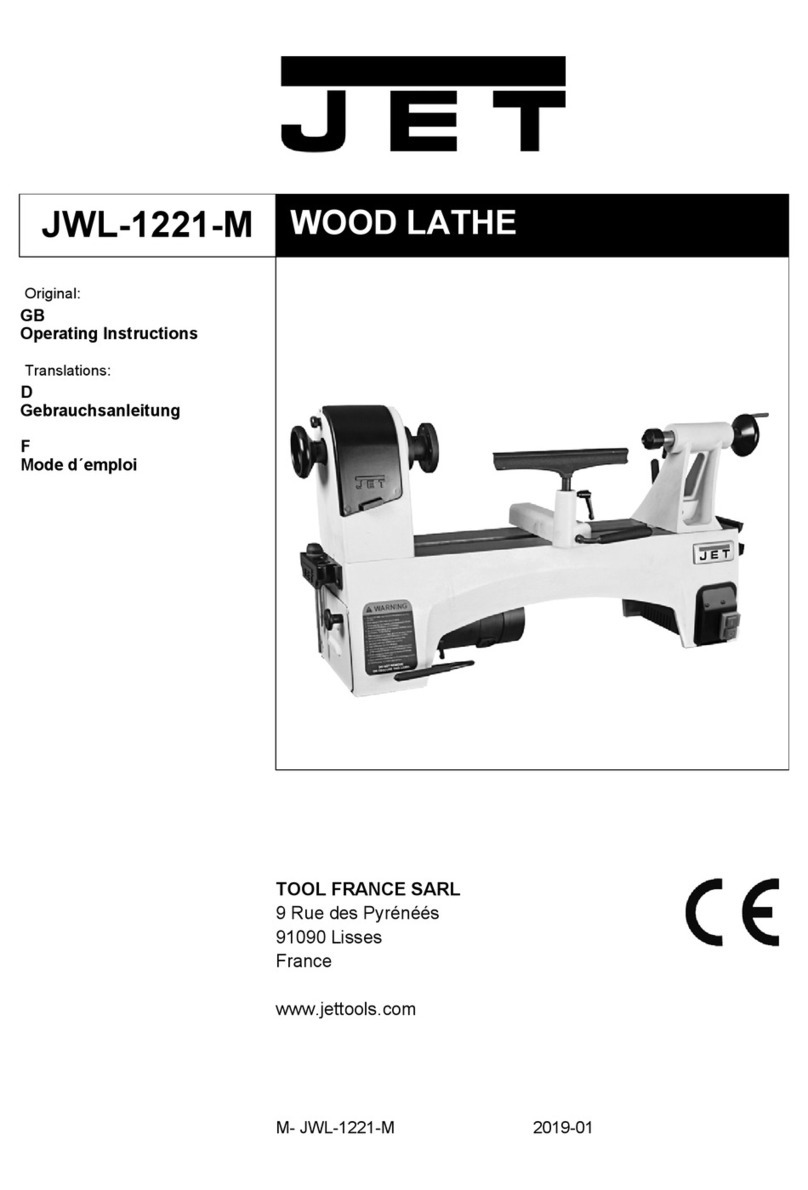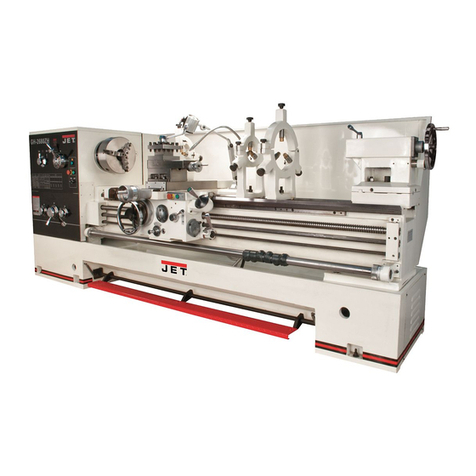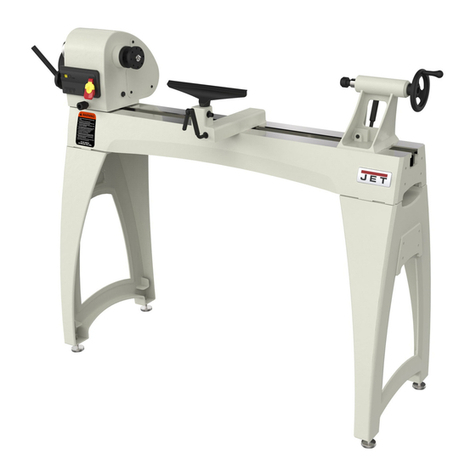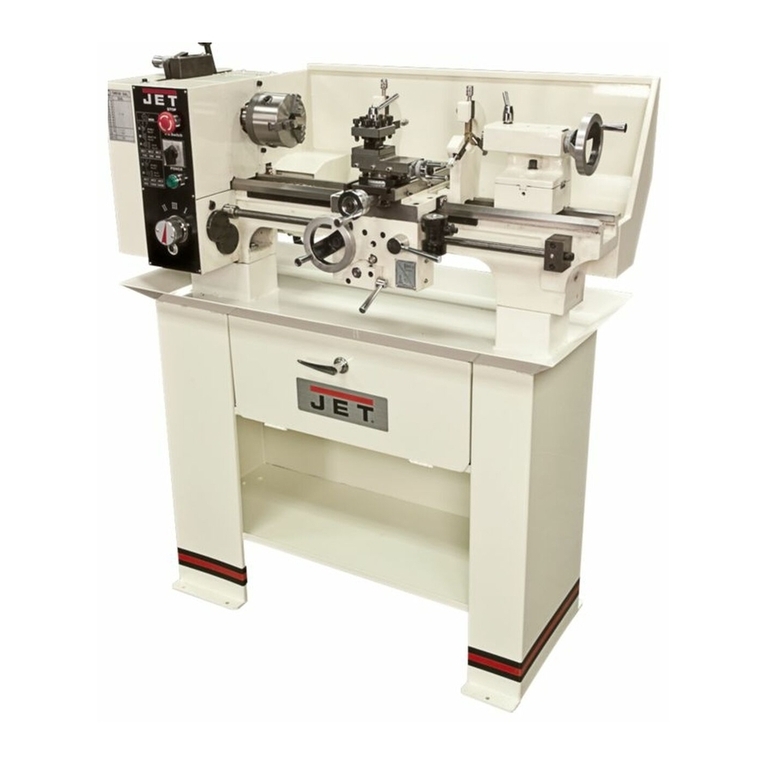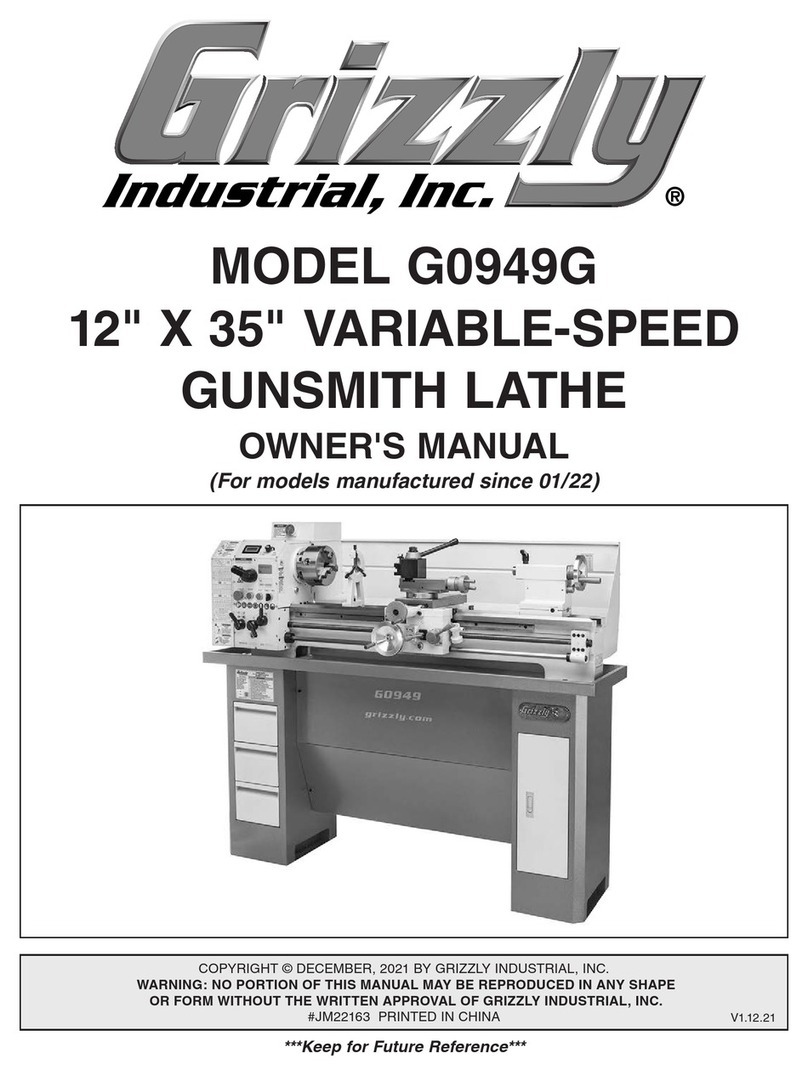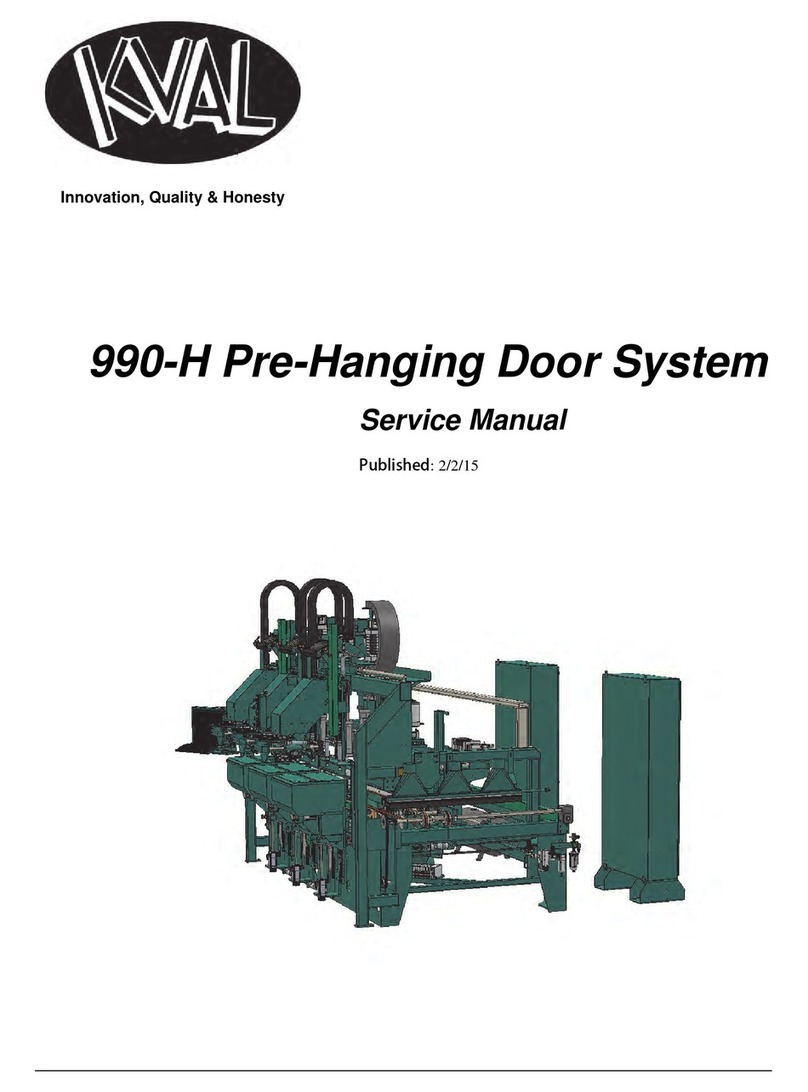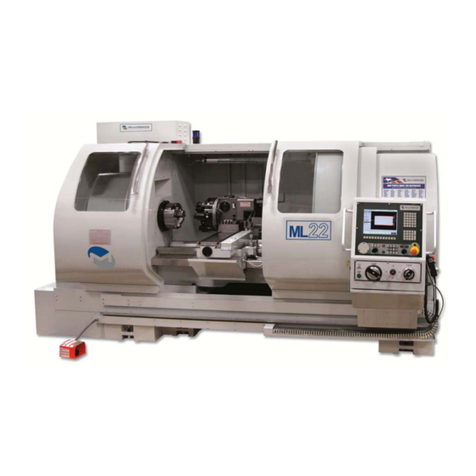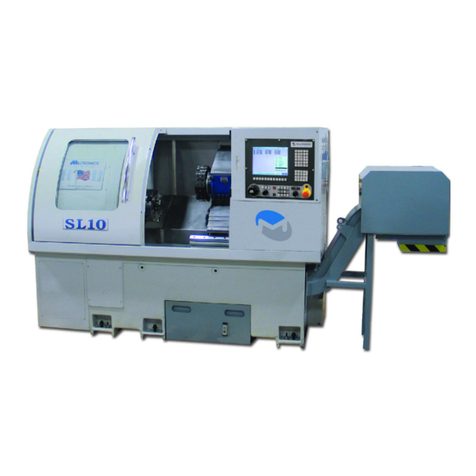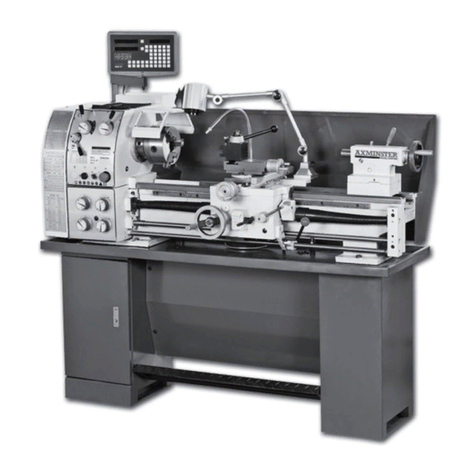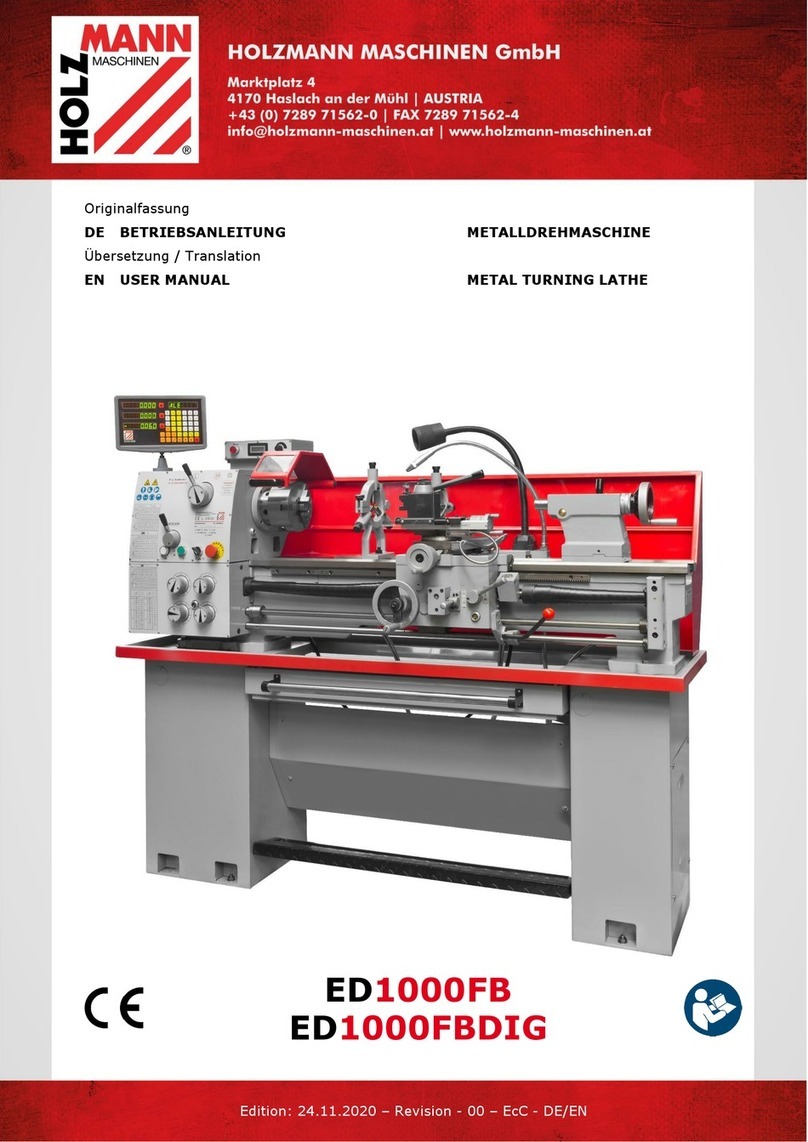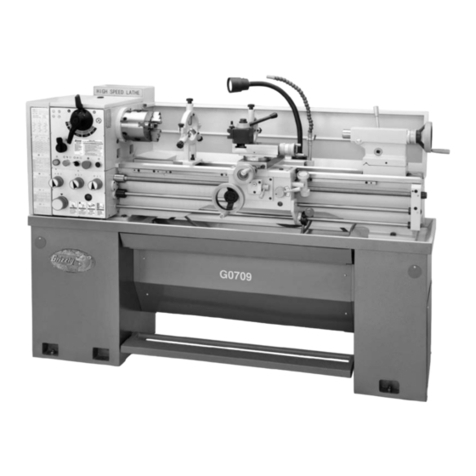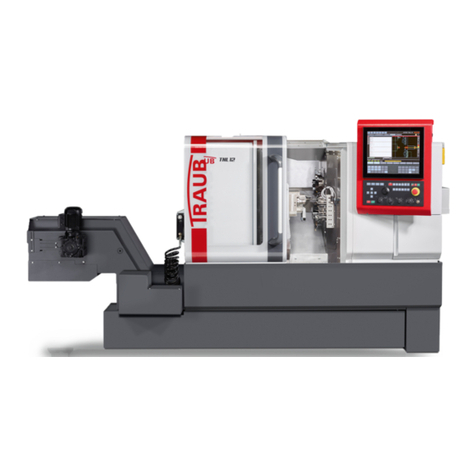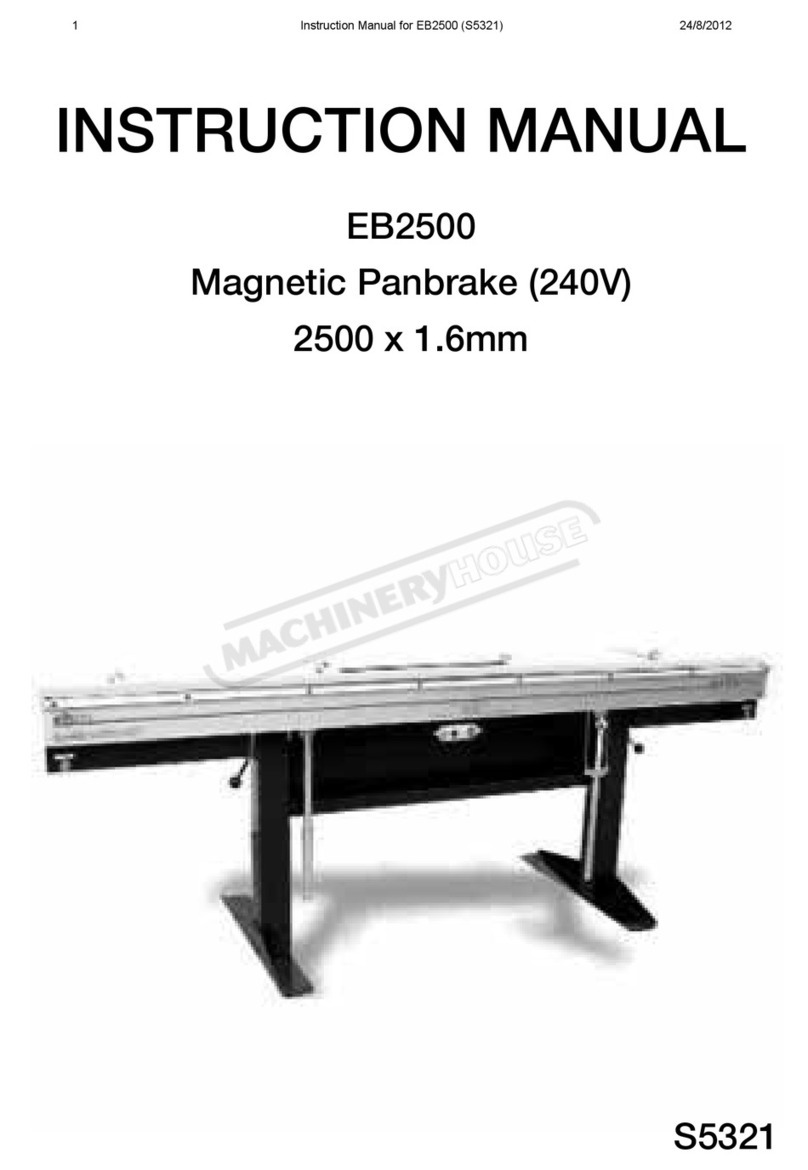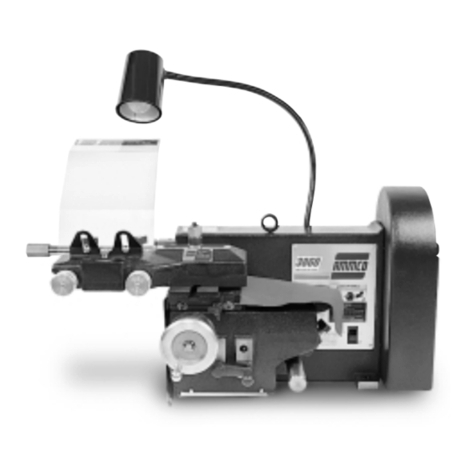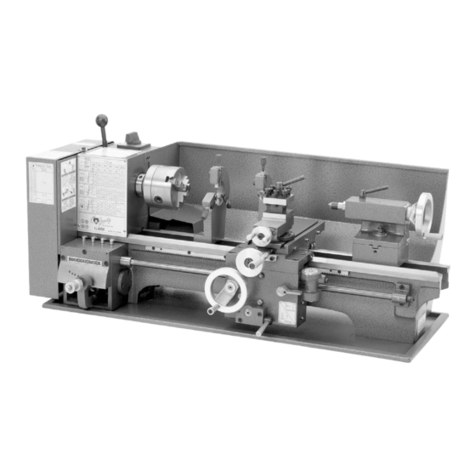
Work only with well sharpened tools.
Machine only stock which is chucked securely on the
machine, always check before switching the machine on.
Provide workpieces with centre holes before clamping
between centres.
Work large and unbalanced workpieces at low spindle speed
only.
When sanding, remove the tool rest from the machine.
Workpieces with cracks may not be used.
Remove the chuck key or dowel pins before turning the
machine on.
Always close the belt cover.
Specifications regarding the maximum or minimum size of the
workpiece must be observed.
Test each set-up by revolving the work by hand to insure it
clears the tool rest and bed. Check setup at the lowest speed
before you increase to the operating speed.
Do not remove chips and workpiece parts until the machine is
at a standstill.
Never stop work pieces with the hand during run out.
Do not attempt to engage the spindle lock pin until the spindle
has stopped.
Never take measurements on a rotating workpiece.
Do not stand on the machine.
Do not obstruct the air flow on heat sinks of AC-drive (allow
natural cooling).
Connection and repair work on the electrical installation may
be carried out by a qualified electrician only.
(Warning: Wait five minutes for DC-bus capacitors discharge
before accessing the AC drive unit.)
Have a damaged or worn power cord replaced immediately.
Make all machine adjustments or maintenance with the
machine unplugged from the power source.
3.3 Remaining hazards
When using the machine according to regulations some
remaining hazards may still exist.
The rotating workpiece can cause injury.
Workpieces that are inhomogeneous or weak can explode
when being processed due to centrifugal force.
Only process selected woods without defects.
Unbalanced workpieces can be hazardous.
Injuries can occur when feeding tooling, if tool supports are
not correctly adjusted or if turning tools are blunt.
Risk of kickback. The tooling is caught by the rotating
workpiece and thrown back to the operator.
Thrown workpieces and workpiece parts can lead to injury.
Dust and noise can be health hazards. Be sure to wear
personal protection gear such as safety goggles and dust
mask. Use a suitable dust collection system.
The use of incorrect mains supply or a damaged power cord
can lead to injuries caused by electricity.
4. Machine specifications
4.1 Technical data
Swing over bed 508mm
Swing over tool rest base 406mm
Centre distance (JWL-2035-M) 800mm
Centre distance (JWL-2020-M) 508mm
Number of mechanical speeds 2
Spindle speed range 1 0-1200 rpm
Spindle speed range 2 0-3200 rpm
Spindle nose M33x3.5 DIN 800
Headstock spindle taper MT 2
Spindle index lock 24x15°, 36x10°
Spindle hole diameter 15.8mm
Tailstock spindle taper MT 2
Tailstock hole diameter 9,5mm
Tailstock ram travel 115mm
Centre above floor 1120mm
Overall for JWL-2035-M (LxWxH) 1974x690x1470mm
Overall for JWL-2020-M (LxWxH) 1581x690x1470mm
Footprint for JWL-2035-M (LxW) 1270x610mm
Footprint for JWL-2020-M (LxW) 890x610mm
Net weight for JWL-2035-M 290 kg
Net weight for JWL-2020-M 254 kg
Mains 1~230V, PE, 50Hz
Output power 1.5 kW (2 HP) S1
Reference current 10 A
Extension cord (H07RN-F): 3x1.5mm²
Installation fuse protection 16A
Protection class I
4.2 Noise emission
Acoustic pressure level (according to EN ISO 11202):
Idling LpA 72.5 dB(A)
In operation LpA 78.4 dB(A)
The specified values are emission levels and are not
necessarily to be seen as safe operating levels.
As workplace conditions vary, this information is intended to
allow the user to make a better estimation of the hazards and
risks involved only.
